One of our featured stops was Vienna, about 350 km (220 miles) upstream from Budapest. Vienna is quite different from the other cities we visited, more modern, more elegant and cleaner. Vienna was the dynastic capital city of the Habsburg monarchy, from 1583-1611. From 1804 to 1867 the Habsburg Monarchy was formally unified as the Austria Empire, and from 1867 to 1918 as the Austro-Hungarian Empire. Throughout the entire period, the Habsburgs kept on building, leaving an architectural legacy that graces the city even today.
The Allied occupation of Austria lasted from 1945 to 1955. Vienna, like Berlin, was subdivided but the central district was administered jointly by the Allied Control Council. Whereas Germany was divided into East and West Germany in 1949, Austria remained under joint occupation until 1955. After Austrian promises of perpetual neutrality, Austria was accorded full independence on 12 May 1955 and the last occupation troops left on 25 October that year. Austria never became an Soviet-dominated country and as such, Vienna did not suffer the neglect and Soviet influence experienced by the other great cities we visited. Budapest and Prague, for example continue to recover from the Soviet occupation, ended in 1989.
If there is one thing in particular that sticks out in my memory, it’s the architecture of Vienna. You’ll see that is the dominant theme of today’s blog.
The first thing we saw, disembarking from our cruise ship was the St. Francis of Assisi church, located opposite to where we had berthed. Built between 1898 and 1910, it was consecrated in 1913. It’s a very prominent structure and an example of the Rhenish-Romanesque style.
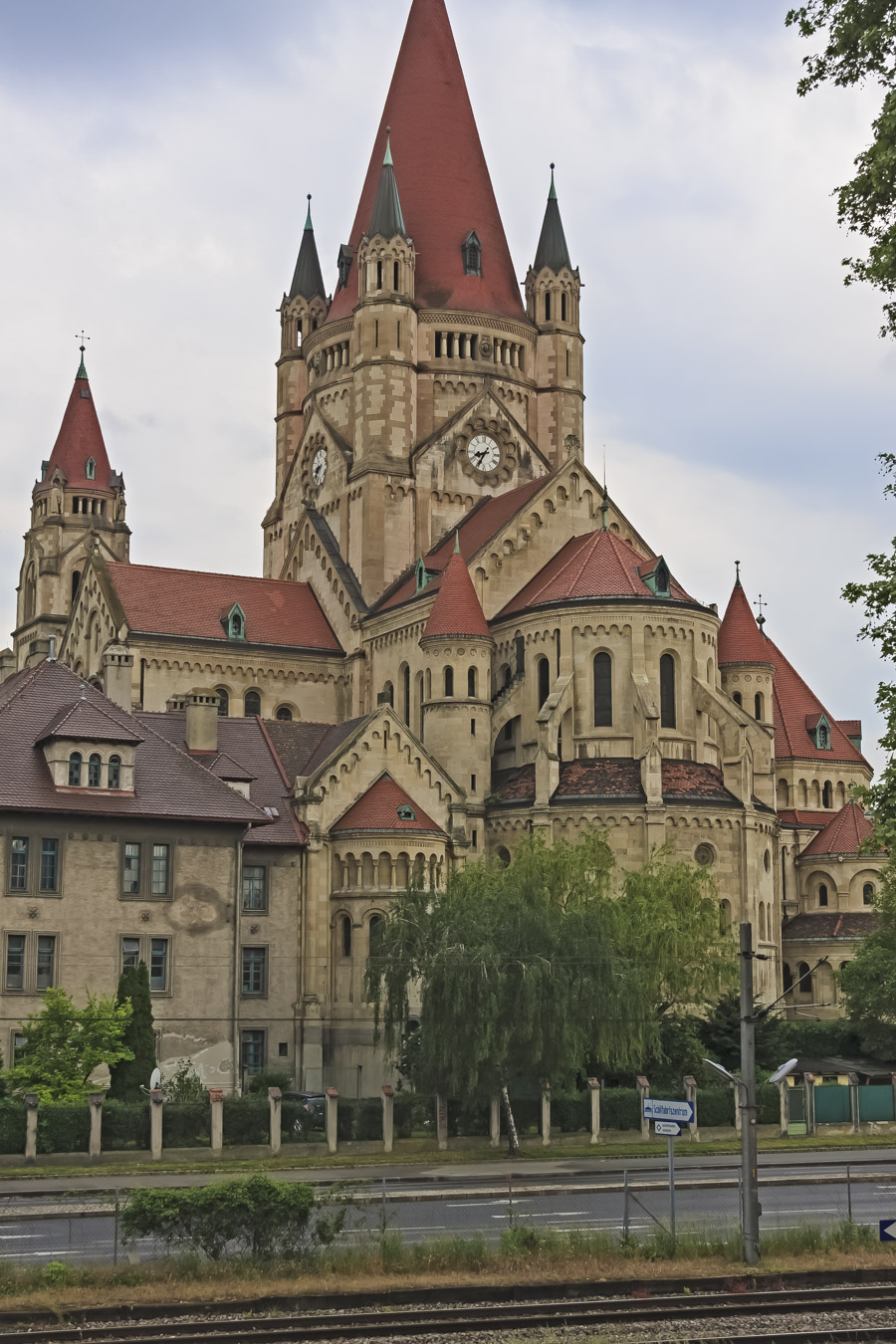
Moving into the city, we saw a number of great churches and palaces. I begin with the Hofburg Palace, the former imperial palace in the centre of Vienna. Built in the 13th century and expanded in the centuries since, the palace has housed some of the most powerful people in European and Austrian history, including monarchs of the Habsburg dynasty, rulers of the Austro-Hungarian Empire. Today, part of the palace forms the official residence and workplace of the President of Austria..
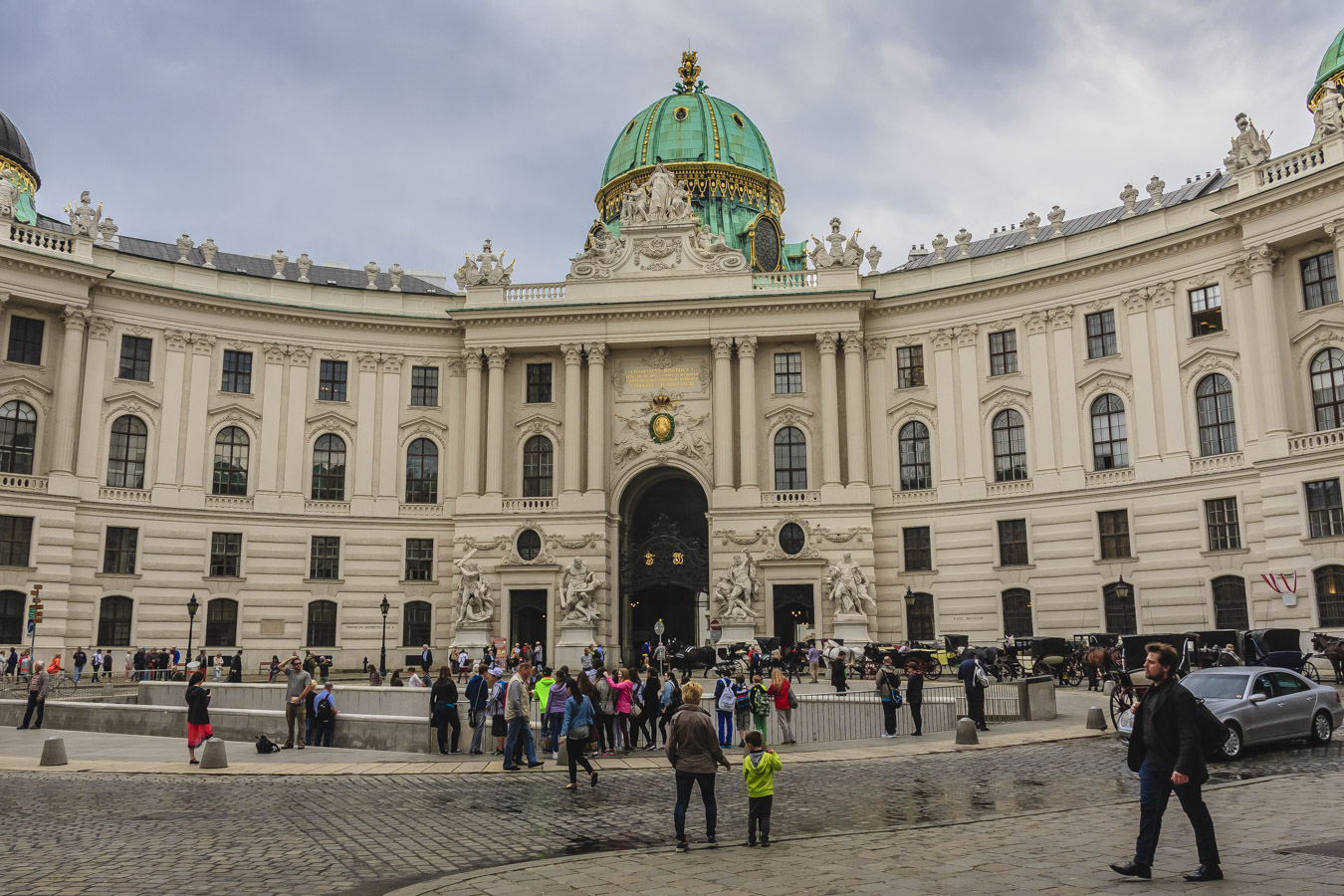
In addition to the great buildings, the city also boasts an impressive collection of statues. Here I’ve included the Neptune statue, located at the Hofburg Palace. I’ve chosen this one for the fascinating colouration of the marble.
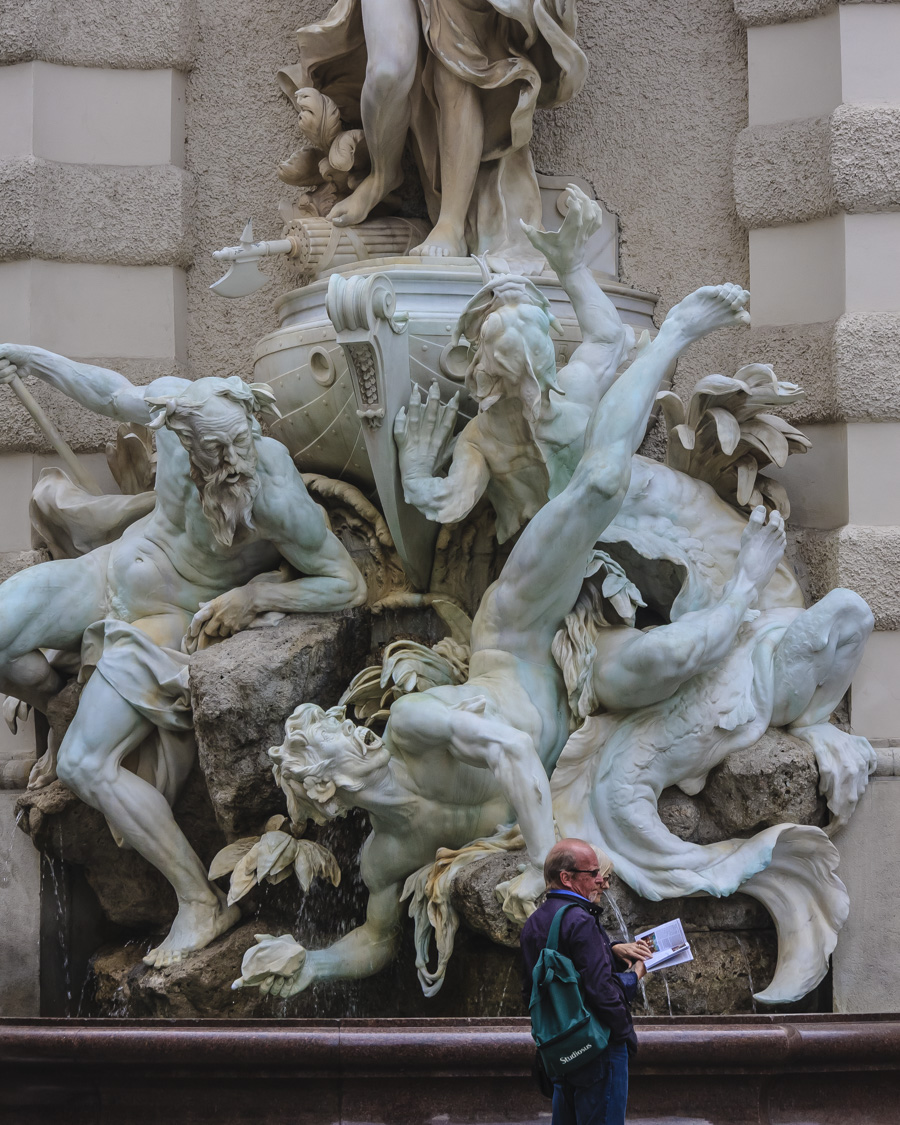
Here’s close-up of the palace’s central dome. I couldn’t get over the brilliance of the golf leaf.
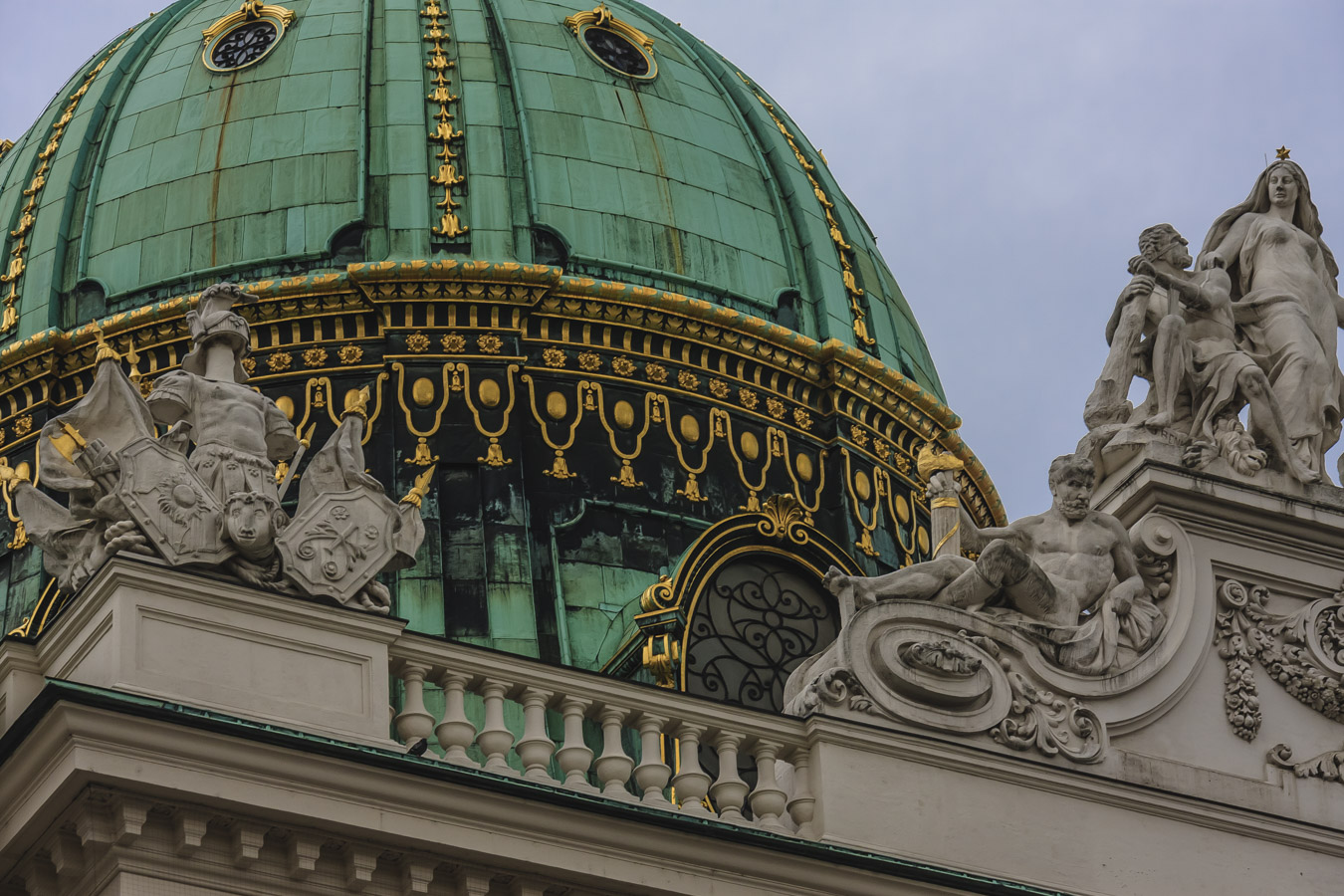
One of the non-architectural features of Vienna are the horse-drawn carriages, known in German as fiakers. The carriages are quite elegant and they’re a popular way for tourists to see the city. These horses were taking a break when I photographed their fiaker.
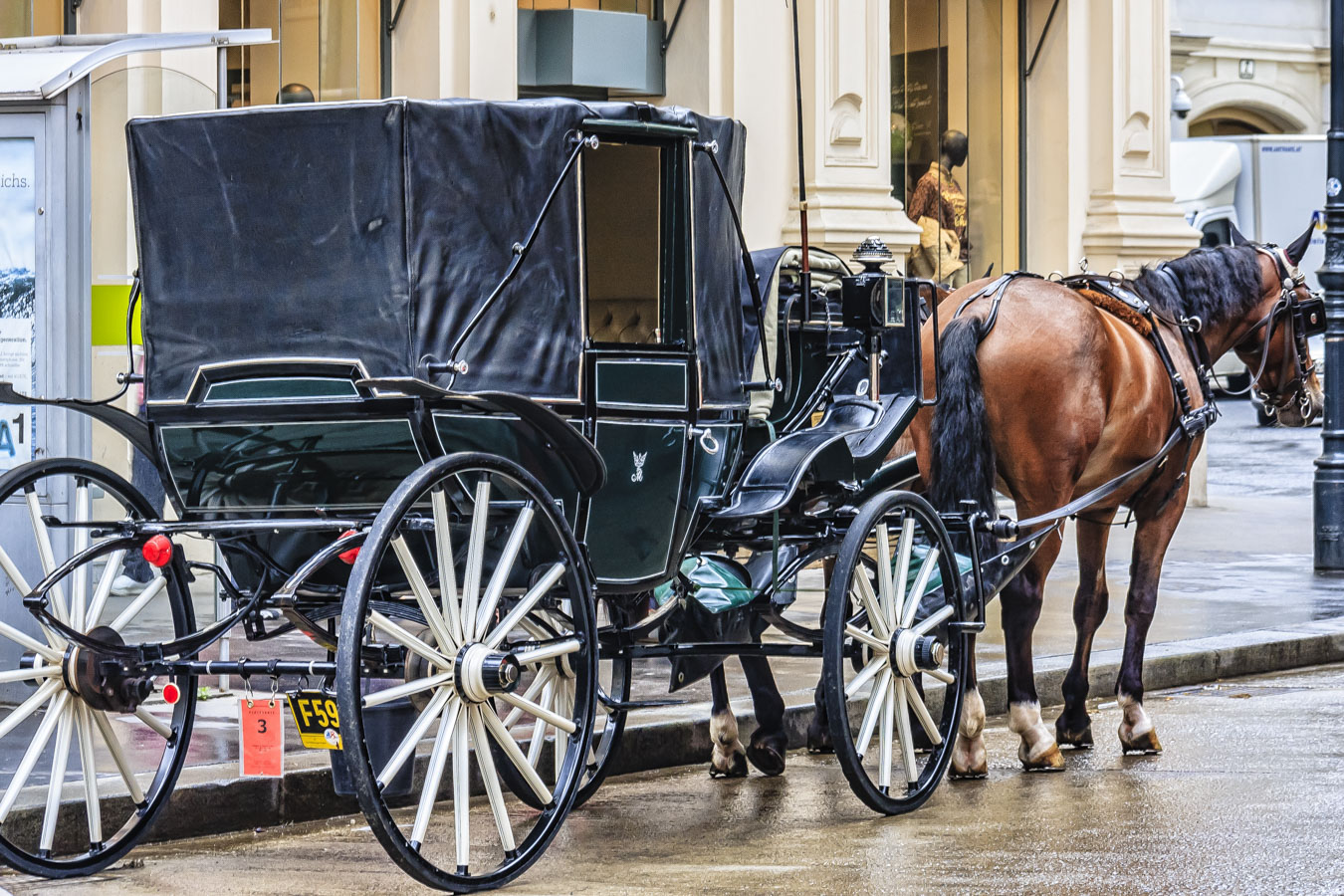
I also got this picture, early in the day of another carriage that later turned out to be the one we had reserved for our afternoon ride. Since the term fiaker can also mean “cabbie” referring to the person who drives the wagon, we were a little unsure if the name on our reservation, Fiaker Baron, applied to a company who owned the carriage, the carriage itself or the driver. It could be all the above, but I’m betting it refers to the driver who unlike the other fiakers, wore a top-hat, rather than a bowler. He was nattily dressed and had a baronial air about him.
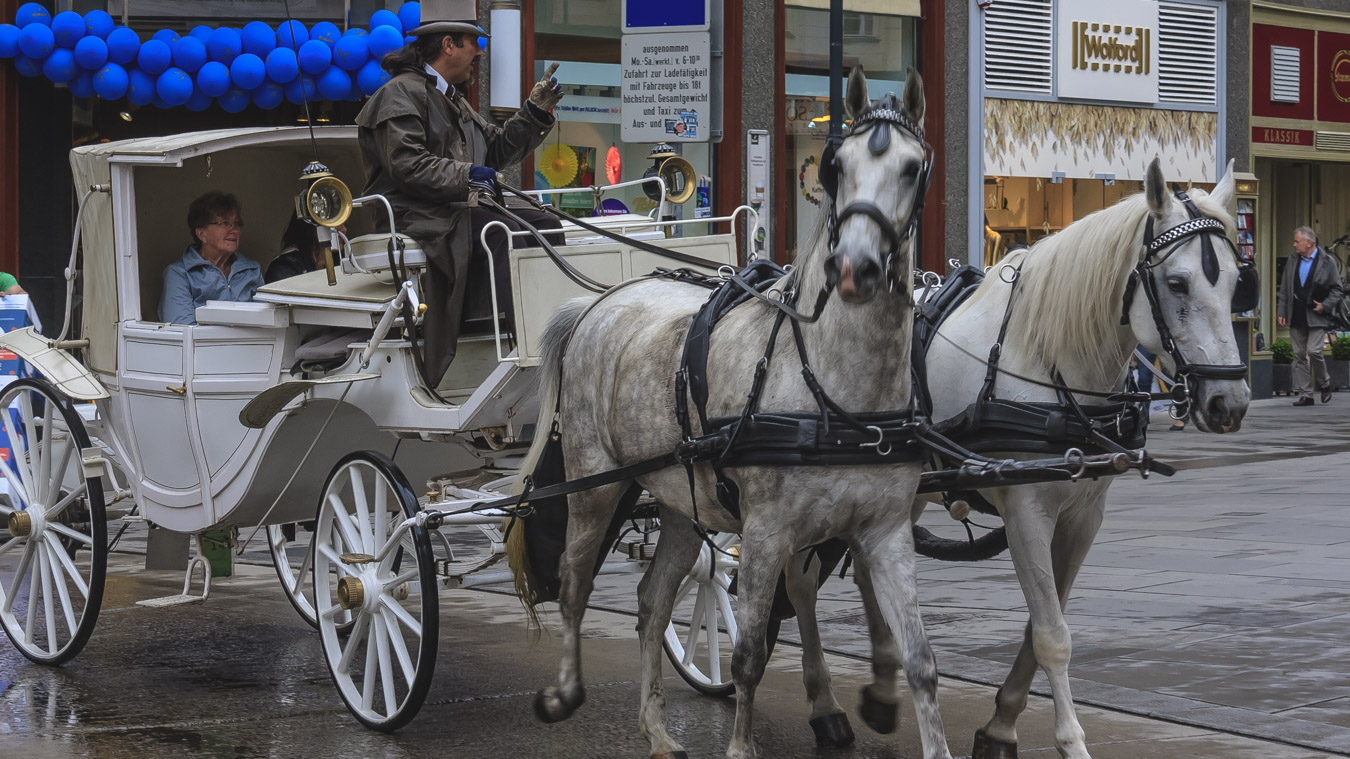
Moving on, one of the busiest tourist areas of Vienna is St. Stephen’s Square, whose centrepiece is the cathedral of the same name. As I indicated in an earlier blog, these cathedrals are difficult to photograph. There is usually a huge crowd, obscuring much of the foreground (not so bad in this case) and of course their immensity is difficult to capture in a single picture (I’ve been aided in this case by some wide-angle distortion to bend the towers inwards). Lastly, cathedrals are always undergoing restoration, so inevitably the picture includes some scaffolding.
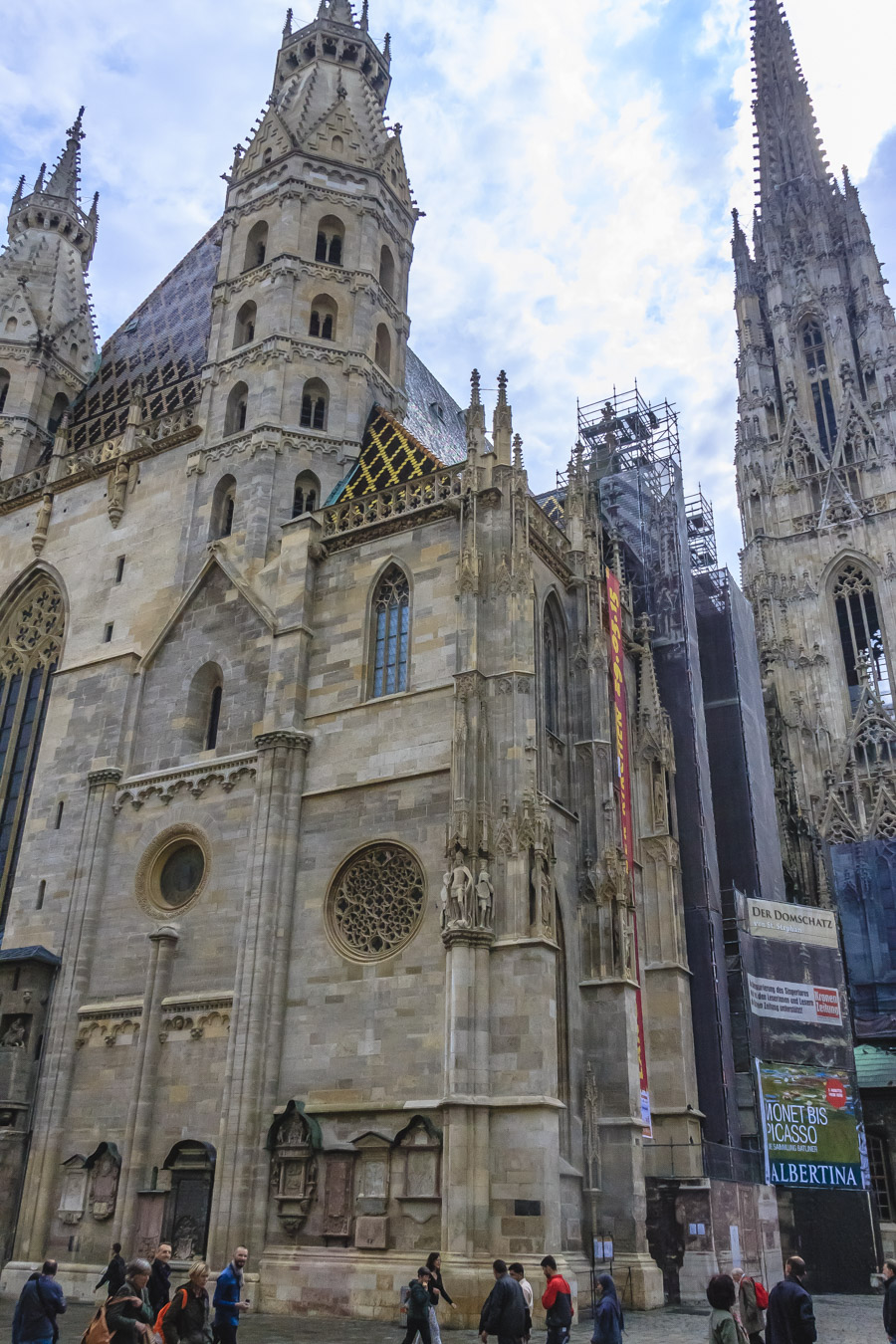
One other statue for today is one I found at the cathedral, the Capistran Chancel. The 18th century Baroque statue shows St. Francis under an extravagant sunburst, trampling on a beaten Turk. This was the original cathedral’s main pulpit inside until it was replaced and moved outside in 1515
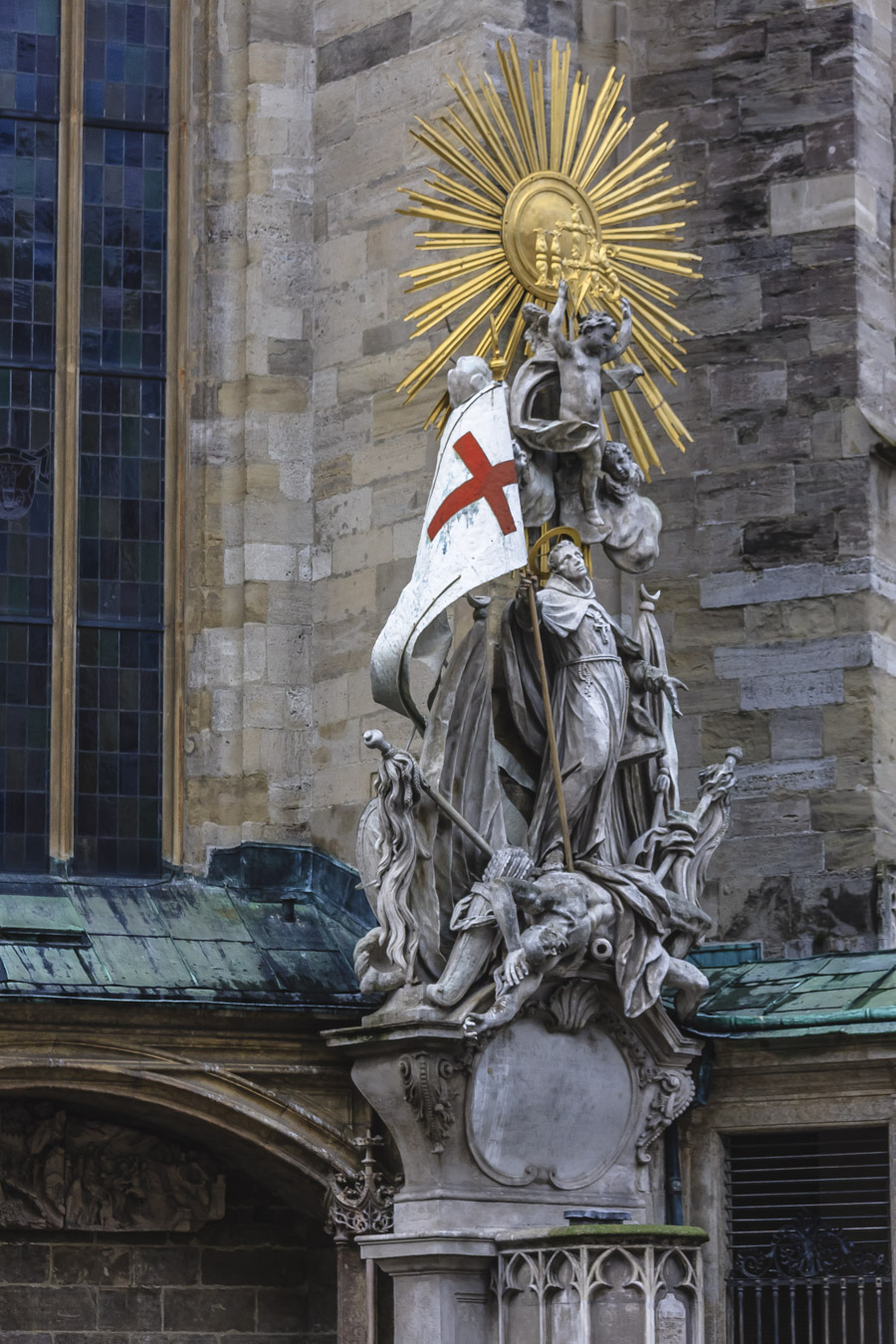
Across the square is a somewhat controversial building, the Haas Building. If it wasn’t so different from its surroundings it might be more admired. It is a bit of a “fish out of water”. Nice reflection of the cathedral though.
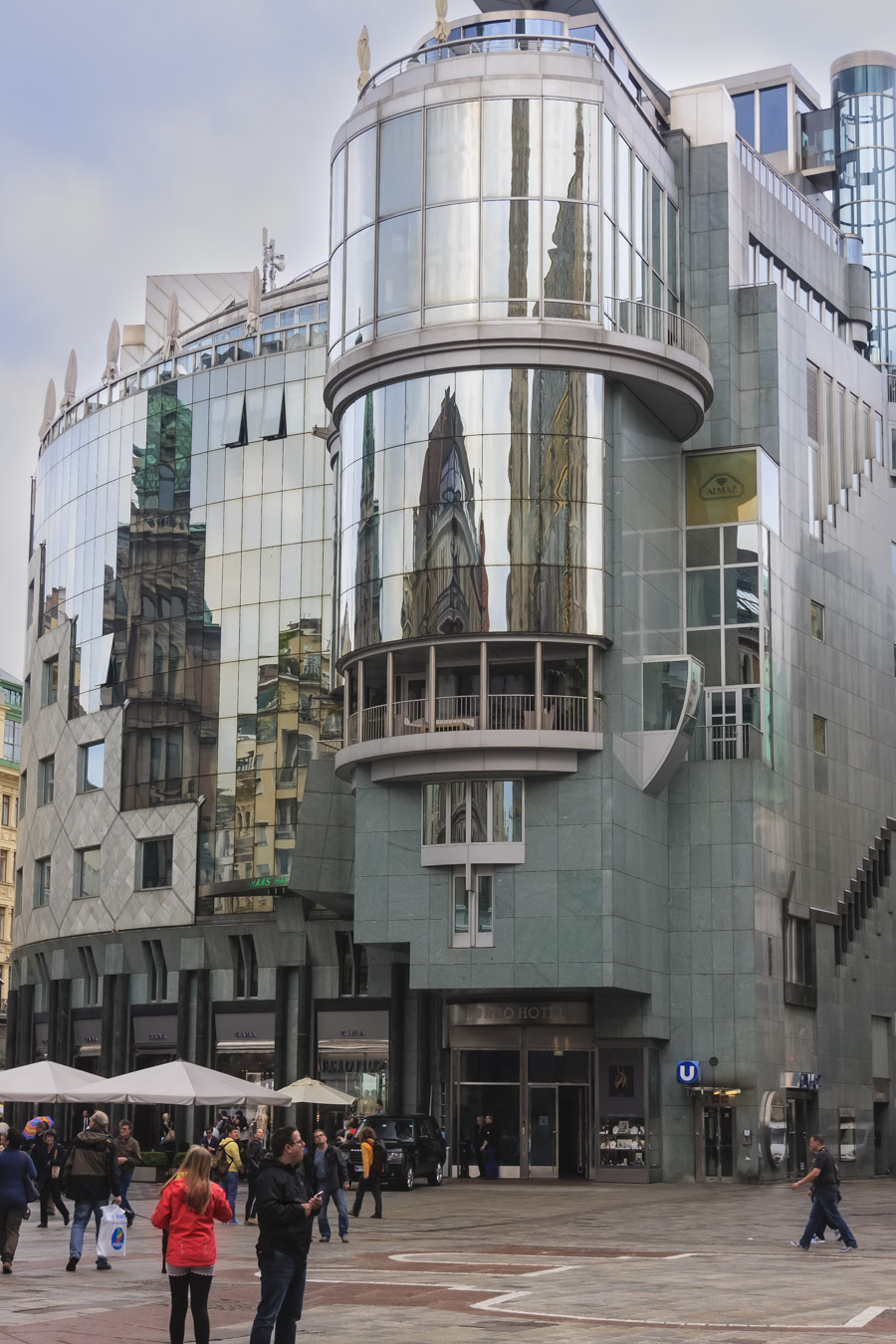
Three more examples of architecture in the city centre, the Kunsthistorisches Museum of Fine Art, the Greek Church of the Holy Trinity (Orthodox) and the City Hall or Rathaus in German. (Rolande observes that “Rat House” seems an appropriate name for a building housing politicians.)
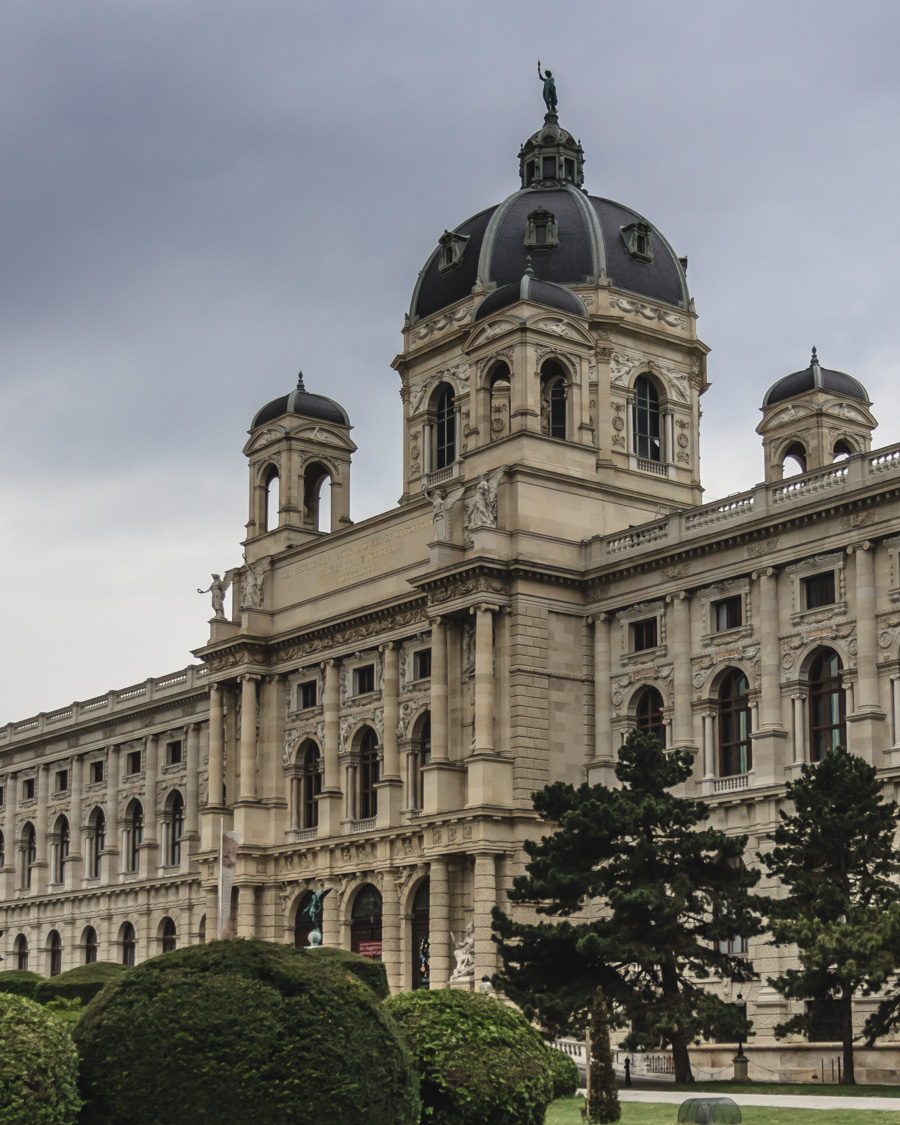
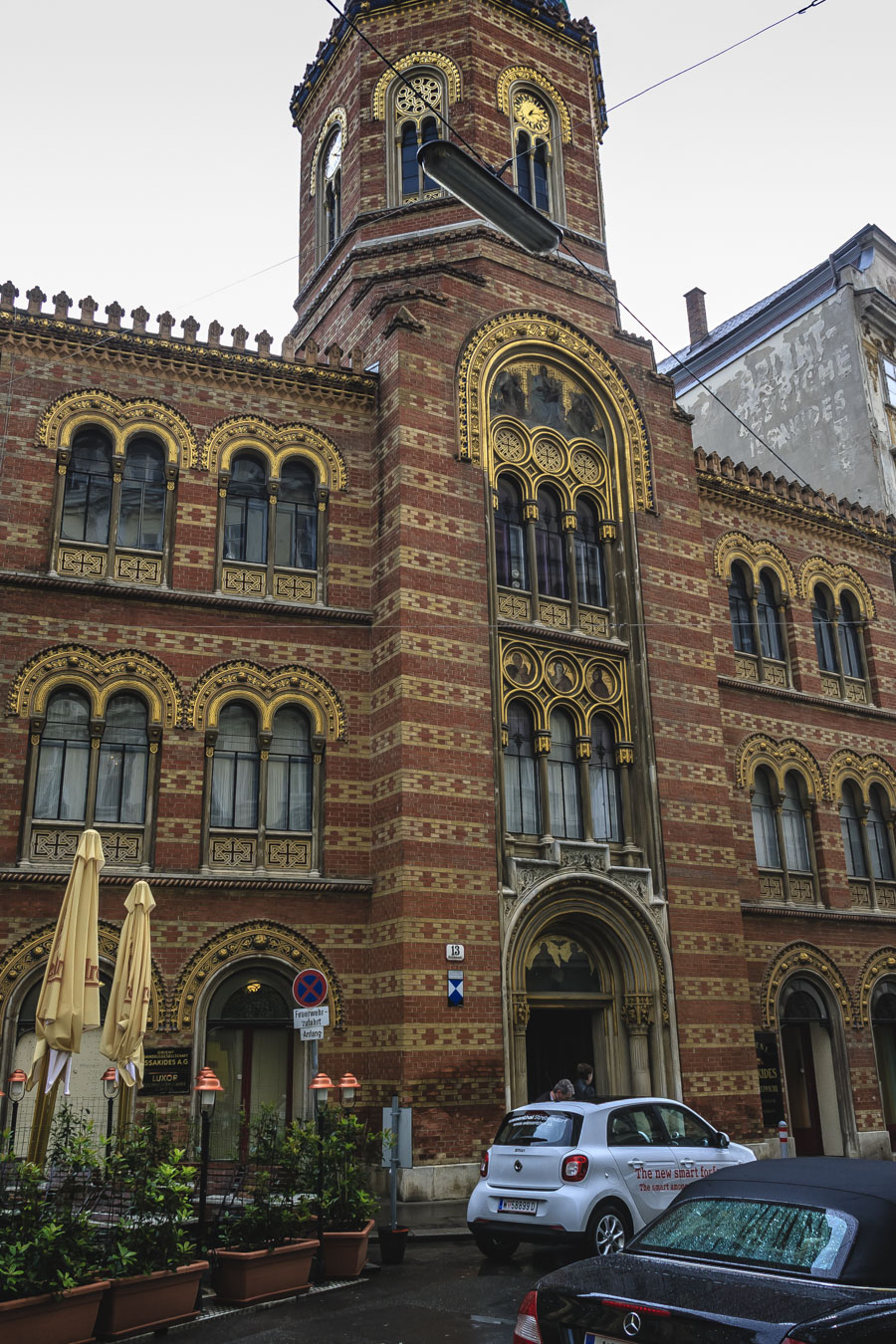
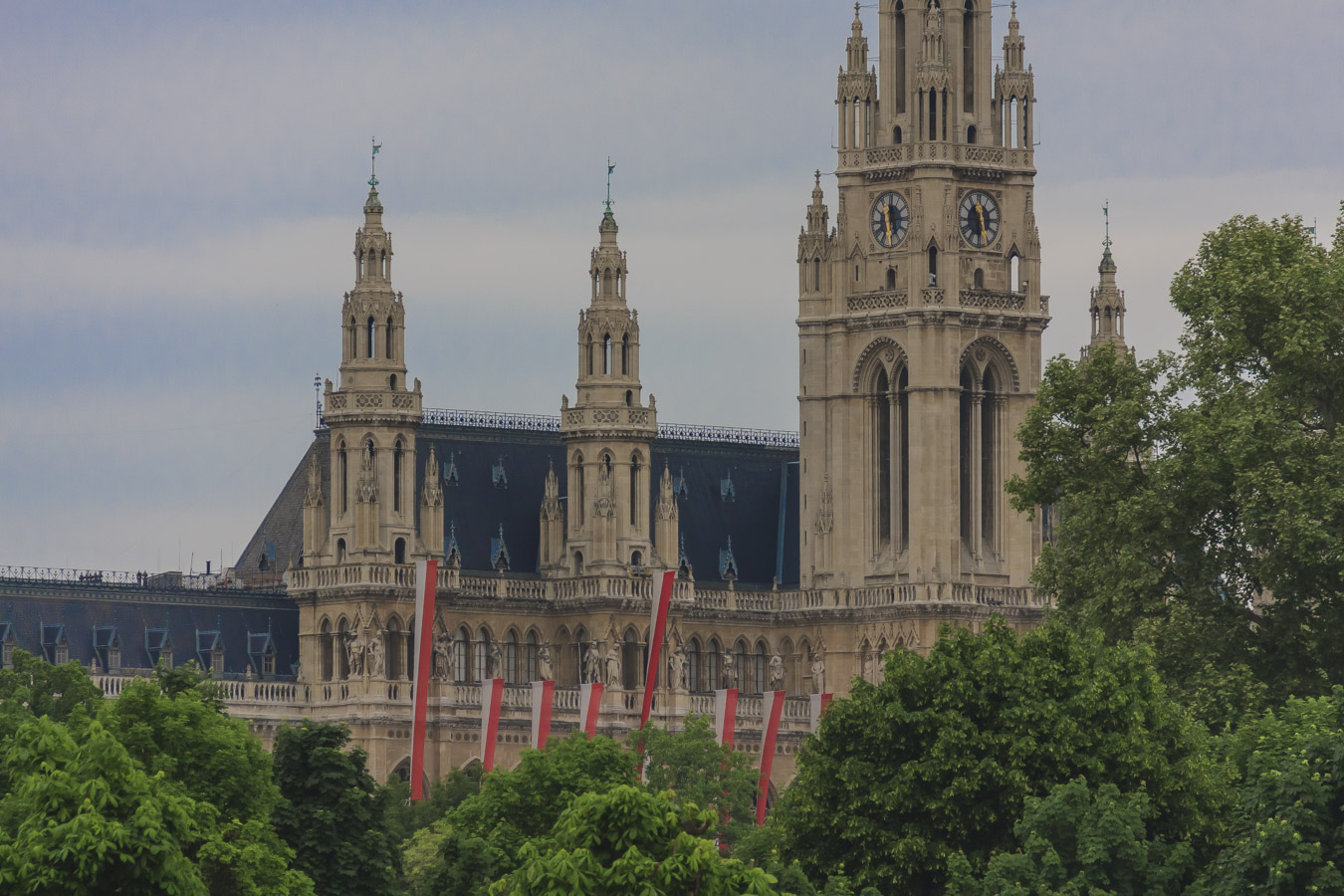
I’ll wrap it up with this partial view of the Schoenbrunn Palace, the summer residence of the Habsburgs. We had the good fortune to attend a concert at the newly revitalized Orangery Schoenbrunn, the largest orangery building in the world. Every evening the Schoenbrunn Palace Orchestra, accompanied by renowned singers and ballet dancers, performs the most famous works of Wolfgang Amadeus Mozart und Johann Strauss.
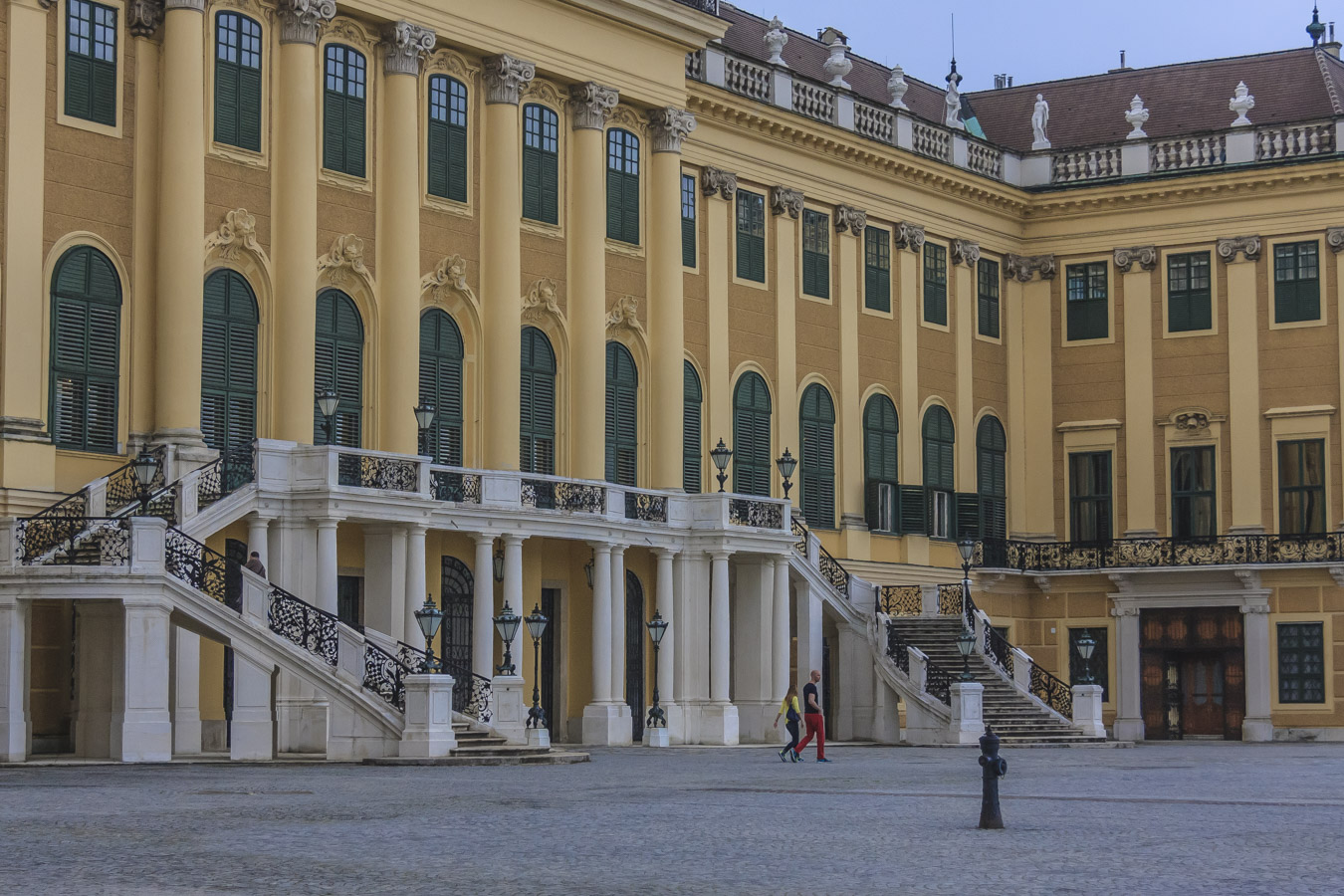
That’s a long one! I hope to practice a little more restraint on some of the blogs to follow.
